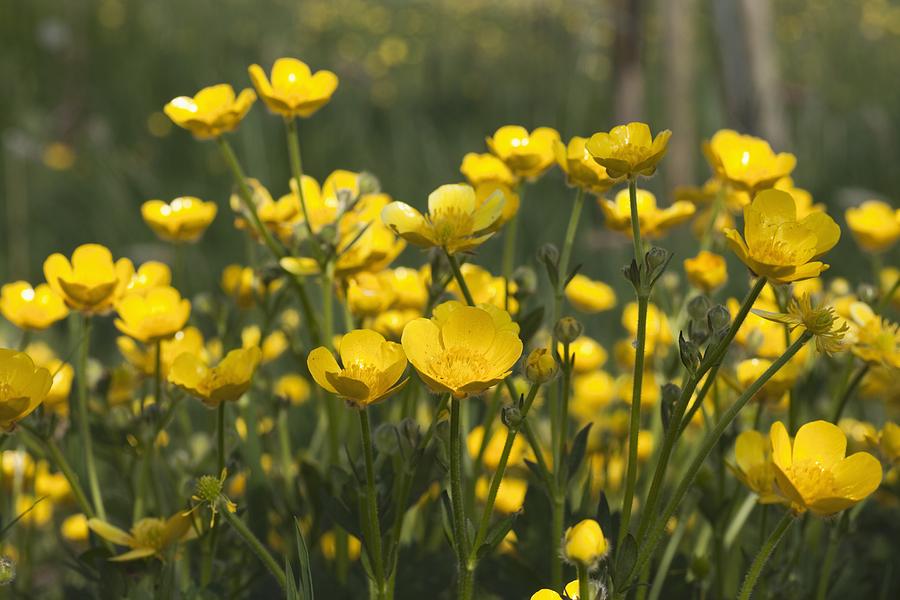Of course, it is beautiful to have a whole meadow in the garden, but its cultivation requires some work. You have to replace the grass soap with lean soil, you have to seed, thresh and tend.
Why not start small? If you already have some wildflowers in a corner, you can keep them thriving instead. Some wildflowers are also available as seeds, so you can sow them wherever the conditions are right.
Here are some examples of wildflowers you can look for.
1.Buttercup
Happy, yellow and generous, the buttercup is a flower you will love. Buttercup (Ranunculus acris) can be found naturally throughout southwest Europe. It is native to Greenland, Iceland and the Faroe Islands, but is imported to Svalbard. In southwest Russia it also thrives by nature, but further east it is conspicuous by its absence, except in two places in the middle of the dough. Kyrgyzstan and the Russian “county” of Chita, in northern Mongolia, also have a native buttercup.
If you are lucky enough to live with buttercup, you can enjoy the happy yellow bloom both when i’s alived or dried. Pick the flowers and dry them by hanging them so you can decorate with them.
Unlike many other prairie flowers, buttercups like to have nutritious soil and will thrive where it is a little more moist. The plant is perennial and reproduces only with seeds that can remain in the soil for a long time. If you don’t have any, there are seeds to buy and so on, preferably in late fall so they have a cold spell.
2.Cuckoo Flowers
When the cuckoo flower (Lychnis flos-cuculi) has just bloomed, it dances quietly, with time it becomes more playful in its branches. Cuckoo flowers usually prefer to grow at the edge of ditches and on slightly wetter meadows. Often just where the big mower tends to swing its chain.
If you are fortunate, you may find it at the edge of your own ditch or in that patch of grass where the nearby forest provides shade and moisture.
If it is already in your home, it is important to maintain the moisture and wild environment it already enjoys. If it gets rid of its protective shade, it will be too dry and if you run the lawn mower, it will take a beating.
Cuckoo flowers are also available in seed form so you can plant them yourself. That way, you can sow seedlings in late summer and it will bloom the following year.
3.Wild Poppy (Papaver rhoea)
The wild poppy is a plant of annual cycle which can reach 50 cm. Its flowers are of an intense scarlet color, bell-shaped, almost spherical.
It is particularly known, because it is from it that is extracted the latex of opium used to produce the morphine.
4.Dandelion
It is also known as bitter chicory and meacamus. Dandelion is a species in the Asteraceae family and is generally considered a weed.
It is well known because its cypselae are fragile in the wind and usually fly away with a single blow. In addition, it has various healing properties, including digestive, diuretic and purifying.
5.Azalea
Azaleas are shrubby plants of Japanese origin. Very typical of the famous Japanese gardens. They are of enormous beauty, but they sin by their delicacy.
If you don’t know how to take care of them, and the type of soil and water they need, they will yellow and fade quickly.
6.Hydrangea (Myosotidium hortensium)
Hydrangea is a fleshy plant with large leaves and intense lilac or blue flowers.
They are found only on Chatham Island, an archipelago in New Zealand, but related species have been found in the Mediterranean and in some parts of America. It is also known to grow well as a houseplant.
Have you ever come across a wildflower in your garden and ended up cultivating it? Share your experience with us in the comment section below.



